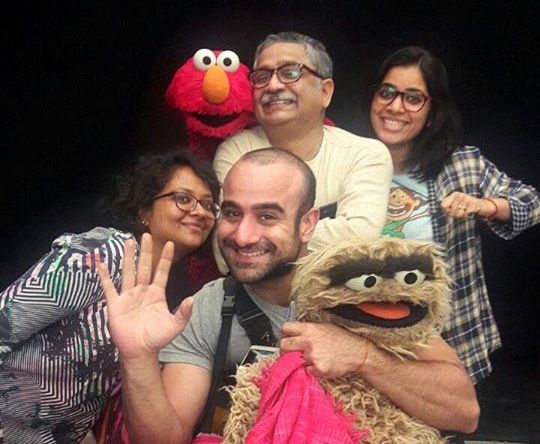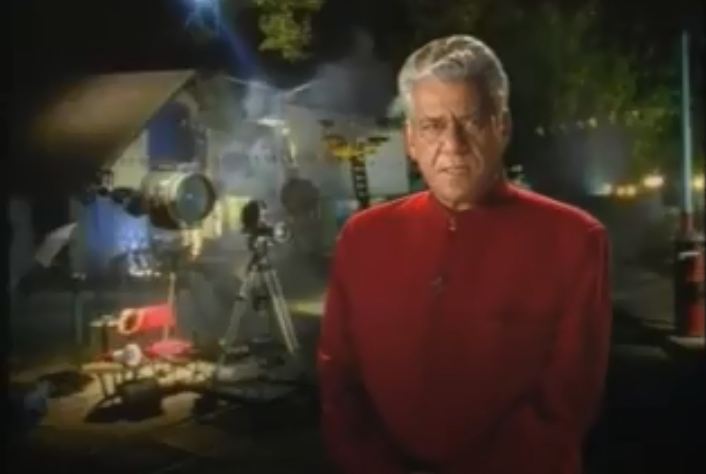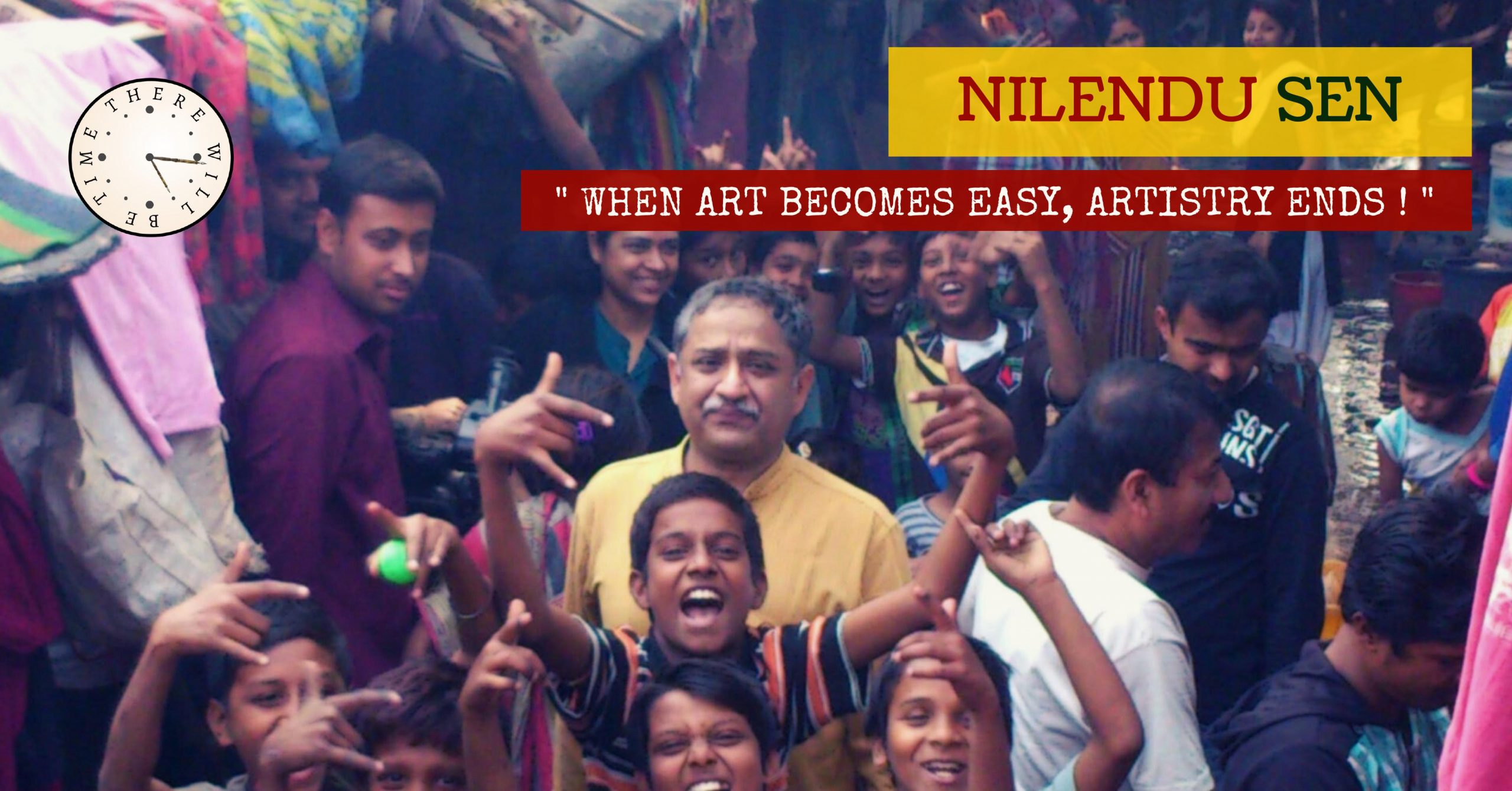When Subhash Ghai came to the Subah Savere studio to promote ‘Taal’ – he had a preconceived notion that he might be meeting a bunch of arty-intellectuals who are neither aware not appreciative of his work. But Nilendu Sen, the producer of the show, soon convinced him that this was not the case.
The way he did that was a bit extraordinary.
Nilendu offered to open his shirt and show Subhash-ji the black stick marks he still carries from his early youth, when he tried to get a first-day, first-show ticket of a Subhash Ghai blockbuster – might be ‘Vidhaata’.
“Kya baat karte hain Subhashji, aapke film dekhne ke liye maine police ke dande khaaye hain…!!! Kholke dikhyoon kya…”
He also elaborated how his daughter, then two years old, often felt cranky – and the only sure-shot way to put her to sleep was playing the songs of ‘Karz’. I really don’t know whether Mr. Ghai took this as a compliment, but he sure was happy, since he spent almost two hours chatting with Nilendu, gave an excellent interview, and returned a friend.
That’s what often happens with Nilendu-da. People who meet him become his friends, mostly lifelong ones. I believe, his smooth wit, and the fact that he does have unusual ways to manifest himself – might have something to do with that.
It’s not something new for him.
With Nilendu, or Neel as his close friends call him, its usual to be unusual; and then, that wasn’t the first time he was offering to unbutton his shirt to get the job done !!!

In those days, if you weren’t an Engineer, or a Doctor or preparing for IAS, or gearing up to become a Chartered Accountant – there was not much else that qualified as a career. Nilendu wanted none of that.
So when college ended, by his own admission, he was staring at a black hole.
Some happy coincidences took him to Siddharth Basu, and he entered the TV bandwagon doing quiz shows – starting with Alpha Plus. He admits, Siddharth Basu was a fantastic teacher, and shared fairly common sensibilities with him – in cinema, theater, literature and other forms of culture and art. In fact he gave Nilendu culture and cinema as the subject to research – which made him completely veer in that direction.
Thereby, he got a chance to rekindle his romance with Cinema.
Genesis of that love story, however, was from much earlier.
That’s true. Doordarshan opened up access to quality cinema like nothing else could do before it. It was nearly impossible watching those kind of films in cinema halls, anywhere in India, unless in a Film Festival, or rare Film Clubs.
All of this made Nilendu develop a voracious love for Cinema, which he took to work. His new job with Ramesh Sharma, globally acclaimed film maker and the owner of Moving Pictures who also did a show called ‘Portrait of the Director’, opened up even more opportunities to explore this passion for the big-screen.
So when Nilendu was assigned the responsibility of doing a travelogue called the ‘India Travel Show’ – he lapped up the opportunity.
But that was not just because he loved to travel.

That’s me paying my respects to Ray ‘s iconic camel ride scene from Sonar Kella..
The only one who might not have liked the experience was the camel.
Very soon, this penchant of Nilendu to explore the ‘Cinema’ in everything he did started bearing fruits. He entered big time into film-based shows.
‘Biographies, Ek Kalakar Ki Kahani’ was one of his most popular programs. Those 26 episodes came off the stuff Moving Pictures had created earlier for DD, like ‘Portrait of the Director’ and ‘Showcase – The best of Indian Cinema’.
Shashant Shah, a well known film-maker today in Mumbai, was then a manager at Sony and he had seen those shows. He suggested to his boss Kacon Sethi, the head of Sony Max, to do something with Nilendu’s team.

Nilendu in the extreme right.
The good-will that Biographies brought home started a long innings with Sony, which continued for over a decade. This was further substantiated with the makeover of a show called ‘Current Bollywood’. Bringing in Sweta Kawatra, the Choti Bahu of Kahani Ghar Ghar ki as an anchor – was a masterstroke that worked wonders. Her screen persona perfectly fit the tone that Team Nilendu wanted for the show.
Come ITA, and the show had won. Again, the Best Film based program.

My long chat with Nilendu was nearing an end.
Not because he was running out of stories – that never happens with him. It was just because I now wanted to come back to our ‘today’.
So I goaded the now dormant journalist inside me – to poke him about this programming overload we are facing today, where everybody out there is staking their claim as a creative artist. I asked Nilendu – is that at all possible?
Quite a diplomatic answer, if I may say so.
Obviously he doesn’t want to rub people the wrong way, especially the younger generation of film-makers and show-producers. But even with all his positivity, he can’t help but admit that in mass-media, things are transforming at a rapid pace. The way content is being disseminated is also going through a phase of fast transformation. If you ask me, with a few notable exceptions swimming against the tide, things do seem a bit chaotic.
But then, I can always ask Nilendu, someone who has traversed across almost the entire journey of the Indian TV boom – where does he see himself now, under these changed circumstances?
Hope is a good thing to have; what else do we live for?
I have to mention here, that this is the concluding part of a two-part blog-post; for those of you that have not read the first post, you can just click on the link below. That was more about how Nilendu developed his musical sensibilities.
Anyone who has spent time with Nilendu Sen would agree with me that it’s very easy to strike a conversation with him; the tough thing is to figure out how to end it.
For now, Nilendu helped me – he concluded this one with a quote.
“ At the end, all I can say is what Sahir Ludhiyanvi wrote, Khayyam sahab set to music and Mukesh sang – and Yash Chopra picturized on the great Mr. Bachchaan.”
“Kal aur aayege nagamo ki khilati kaliya chunne wale
Mujhse behatar kahne wale tumse behatar sunne wale
Kal koi mujhko yaad kare kyu koi mujhko yaad kare
Masaruf zamana mere liye kyu waqt apna barabad kare”
Forgive my audacity, but I attempted a translation of Sahir, for those of my readers who may not understand Hindi or might not have heard those lines. I don’t know of many who haven’t, and its unlikely that they might read my blog – but one can never say.
Do not troll me for the quality of translation. Nilendu-da would have done a way much better job. For now, make do with this.
“There will be others to harvest the blooming buds of melodies
Better orators than I am, better listeners than you are
Why would the tomorrow remember me, why should anyone?
Why should the busy world squander its time on me?”
If you are from this industry and you have seen Kagaz ke Phool, you might understand why.


The picture is with the mupeters and the head of the team that were hired by Sesame to produce Galli Galli Sim Simk.. I was their Creative Director, once again trying to insert some Bollywood elements in the narrative.. trying to being the operative phrase..
Greatly enjoyed reading the write-up. Nilendu Sen seems a fascinating personality.
I know my Buddy Nilendu “Neel” from the last 38 years and believe me I am very proud of his achievements of his wonderful writing skills his depth of knowledge on World Cinema and understanding of the Indian Art and Culture.
Always love you “Neel”Dada from now onwards I will address you as Neel Dada.
Kindly identify yourself here superstar
Thank you, Anirban for bringing out in public what we always kept in our hears about Nilendu babu .The cradft and it’s master with such humility, is something I shall always admire. Such luck, such please to have known him.
Thanks for reading. Thought it was high time people beyond us should know how we feel.
Touched
loved it!
The flame of melody touched the blue (‘Neel’ in Bengali) horizon to create the flavour of spring – thus goes a popular Tagore song in Bengali
With influencers like Sreeraj Ghosh, Dadabhai, The Neel Diganto was sure to expand. A retired management consultant and engineer by profession, an amateur authority on Tagore and Bangla culture..
Just wonderful. I’ve been waiting for the second part since I read the first one. My deepest regards and with fascination for you and your life, I look forward to meeting you sometime and hearing these stories in person.
That is a distinct possibility. Rope me in when you do that Hemant – UP borders are open now.
Me 2!
Thanks Anirban. I have known Nilendu for the last 22 years. We worked together for almost five years and also had several long sittings but many things I came to know through your blog only. Nilendu has got so many opportunities of working with big shots but he himself has amazing capacity and talent to produce master craft of TV and films which he had proved many a times. Sometimes, I feel that industry has not utilized his potential properly and he should get a chance to produce what he wants to produce Dil Se.
I feel the same Mukeshji. Thanks for your kind words.
Nilendu, I am Gautam Bhattacharya, Ex-Players / K, M and Keval’s classmate. I found this blog extremely interesting, would love to get in touch with you directly. My mobile no : 9810020744, do message me when convenient. Thanks
Gautamda, the blog itself is extremely interesting. Anirban is a finne writer and has the knack to tap into the most interesting plot points in any story and declutter it for a very interesting read.. Share the blogspot please